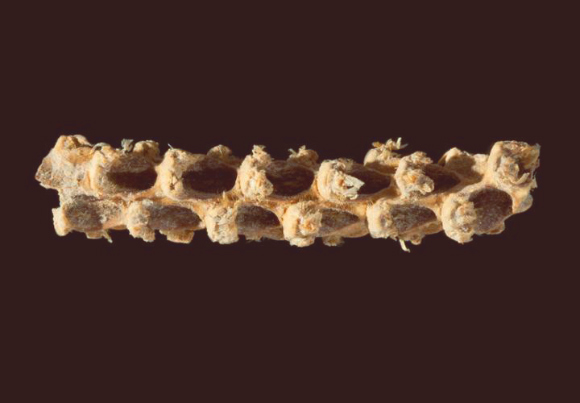According to an international team of scientists who have sequenced the genome of a 5,310-year-old maize cob from the Tehuacan Valley, the maize (Zea mays) grown in central Mexico more than five millennia ago was genetically more similar to modern maize than to its wild counterpart.
Scientists have long debated how and why ancient people domesticated maize, in large part because the wild ancestor of maize — a wild grass called teosinte — provides little nutrition. Each teosinte ear produces only 5 to 12 kernels, and each kernel is surrounded by a hard casing that must be removed prior to eating.
Now, a genome-scale study of DNA from an ancient maize cob brings them closer to answering these questions.
“Around 9,000 years ago in modern-day Mexico, people started collecting and consuming teosinte. Over the course of several thousand years, human-driven selection caused major physical changes, turning the unproductive plant into modern maize, commonly known as corn,” said Dr. Nathan Wales of the Natural History Museum of Denmark, who is the senior author on the study, published in the journal Current Biology.
“Maize as we know it looks so different from its wild ancestor that a couple of decades ago scientists had not reached a consensus regarding the true ancestor of maize.”
To more fully understand the history and spread of maize, Dr. Wales and co-authors characterized the genome of a 5,310-year-old maize cob (Tehuacan162) excavated in the Tehuacan Valley of Mexico in the 1960s.
“Archaeological specimens frequently have high levels of bacterial DNA due to decomposition and soil contaminants,” Dr. Wales said.
“However, during genetic testing of ancient cobs, we were astonished to find that 70% of the DNA from Tehuacan162 was from the plant.”
The ancient cob didn’t have hard seed coats like its wild ancestor would have. But, it is less than a tenth of the size of modern cobs, at less than 0.8 inches (2 cm) long.
In addition, Tehuacan162 produced only 8 rows of kernels, about half that of modern maize.
That led the team to suspect that its genes would offer clues on the early stages of maize domestication.
To make the most of the small sample, the authors used cutting-edge paleogenomic techniques.
They extracted DNA with a method designed to recover ultra-short DNA, taking special care to avoid losing any genetic material.
As a result, they were able to prepare sufficient DNA for sequencing while still preserving enough of the sample to determine the cob’s precise age via radiocarbon dating.
In a gene-by-gene analysis, the ancient sample shows that many key genes had already been modified through human selection, including the lack of a hard seed coat and changes in flowering time.
Other traits were not yet under selection, including sugar content of the kernels and, surprisingly, a gene that is related to dispersal of kernels from the plant.
“Wild plants naturally release their seeds at the appropriate time, but humans have modified domesticated cereals so they retain their seeds so they can be easily collected from fields,” Dr. Wales said.
“The finding that the ancient maize cob has the ancestral version of the gene is unexpected and encourages further research.”
“Our findings offer an informative snapshot in the evolutionary history of maize and its domestication,” the scientists said.
“In addition to elucidating how maize provided a dietary foundation for ancient civilizations like the Maya, such studies can also aid in understanding and improving commercially important lines of modern maize.”
_____
Jazmín Ramos-Madrigal et al. Genome Sequence of a 5,310-Year-Old Maize Cob Provides Insights into the Early Stages of Maize Domestication. Current Biology, published online November 17, 2016; doi: 10.1016/j.cub.2016.09.036








